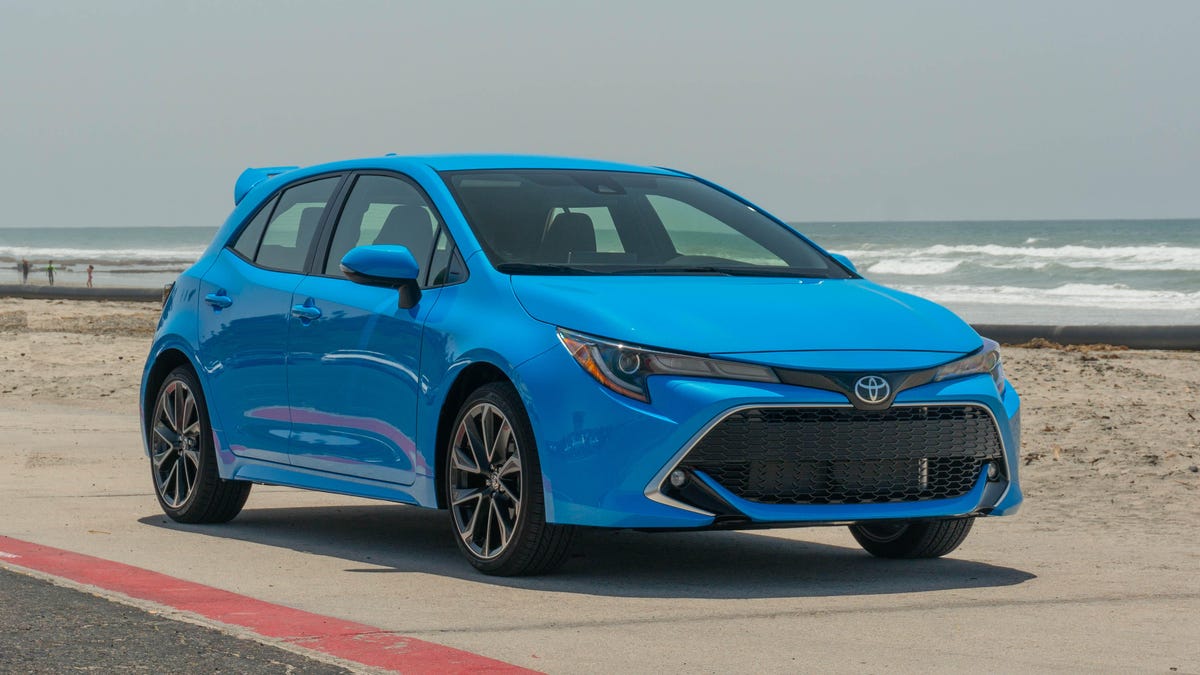How does the 2019 Toyota Corolla Hatchback's Direct Shift-CVT work?
The 2019 Toyota Corolla Hatchback features a new look and a new CVT that's like none we've seen before. Let's dig into how it works.

During a recent look at the new 2019 Toyota Corolla Hatchback, we saw that it's a little sportier, a bit more stylish, but a loaded lot more high tech. One particularly interesting piece of powertrain tech is the new Direct Shift-CVT.
CVTs, or continuously variable transmissions, have the advantage of being more fuel efficient than conventional automatics. However, they've gained a bit of a bad reputation for their vague and disconnected feel. Toyota's new CVT hopes to improve on both fronts with "the world's first launch gear in a passenger vehicle CVT."
But what does that mean and how the heck does it work? Let's dig in.
The new Corolla Hatchback boasts a new Direct Shift-CVT that is more responsive and more fuel efficient.
How a 'normal' CVT works
Most transmissions work by meshing physical gears to adjust the ratio between engine speed and wheel speed. A CVT does away with gears, instead using two conical pulleys connected with a belt. By changing the position of those pulleys, a CVT is able to constantly and continuously vary the drive ratio rather than stepping between fixed gears.
In theory, a CVT can be always in the perfect "gear" for any combination of engine and road speeds, resulting in improved fuel economy relative to transmissions with fixed ratios. There are, however, trade-offs.
While more efficient most of the time, belt-driven CVTs can be less responsive when pulling away from a stop or passing and can be less efficient at very low speeds relative to geared transmissions. Drivers also tend to dislike the absence of perceptible shifting as well as the lag between throttle input and acceleration that poorly-tuned CVTs often exhibit.
CVTs don't feature gears. Rather, a belt and adjustable pulleys are used to continuously vary the drive ratio.
This disconnected feel put even non-enthusiasts off of early CVTs, but the technology has been improved dramatically in recent-generation vehicles. However, Toyota thinks it can do better.
The fixed launch gear
Because CVTs are typically less efficient off the line, Toyota has added a traditional fixed first gear to the system to serve as a launch gear.
You're stopped at an intersection and the light turns green. As your foot moves from the brake to the gas pedal, the fixed first gear engages, giving the engine a more direct connection to the front-drive wheels than a belt could offer. The benefit is less energy wasted and improved efficiency at very low speeds. More responsive pedal feel, improved acceleration and improved drivetrain durability are also very nice side-effects of this configuration.
The Direct Shift-CVT features a fixed first gear that engages via electronic clutch when pulling away from a stop.
Depending on how hard you're accelerating, the first gear stays engaged until about 15 to 25 mph. At this speed, the launch gear's clutch disengages and the transmission switches automatically to pulley-based CVT operation. Even if the speed drops down again, the launch gear doesn't re-engage until the car comes to a complete stop.
Continuously variable operation
Though disengaged at higher speeds, the mere presence of the launch gear affects the rest of the CVT's operation.
With the launch gear handling the highest input loads during starts, the CVT's hardware are under much less stress. So, Toyota was able to shrink the belt and pulley. This reduction of mass reduces drivetrain drag and means the belt can shift about 20 percent faster, allowing the engine and transmission to stay more in sync as the car changes speeds, reducing acceleration lag. With the launch gear handling the lowest speeds, the pulleys have also been retuned to operate at even higher ratios, giving the gearbox a much wider overall range of operation that, in turn, improves highway fuel efficiency.
During low-load operation -- like cruising, coasting or tooling around town -- the CVT constantly changes ratios to keep the engine operating as efficiently as possible. However, if you stomp the accelerator for a pass, grab a paddle shifter or otherwise drive aggressively, the CVT can switch to "10-speed Sequential Shiftmatic" operation, holding and shifting between 10 preset ratios to mimic the revving and shifting of a conventional automatic transmissions. Though technically not as efficient, these "virtual gears" make the acceleration feel familiar and have a psychological effect on the driver's perception of speed.
But how well does it work?
Toyota's claim of improved off-the-line responsiveness is realized every time I pulled away from a traffic light or stop sign. No, the launch gear doesn't transform the Corolla Hatch into a sport compact, but throughout the entire speed range, the new transmission feels a lot more normal and transparent. The transition between fixed and continuous operation was a fairly seamless, feeling as smooth and uneventful as any other automatic transmission. That's pretty high praise for a CVT.
The Direct Shift-CVT is mated with Toyota's new 2.0-liter Dynamic Force four-cylinder engine under the 2019 Toyota Corolla Hatchback's hood. Toyota says the new Direct Shift unit is about 6 percent more efficient than its current CVT. Given my limited time behind the wheel, I can't really know how much the real-world fuel economy has improved for this generation, and the EPA estimates haven't been announced yet. You'll have to stay tuned for an announcement closer to the July 2018 launch.
While you wait, check out our full First Drive to learn about the improved handling and the impressive loadout of standard safety tech for this new generation.

